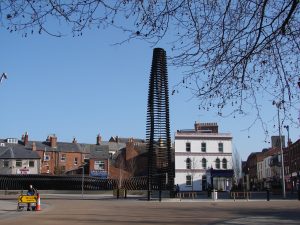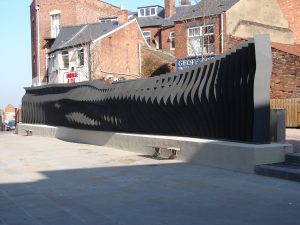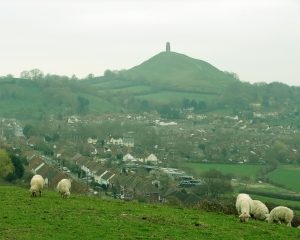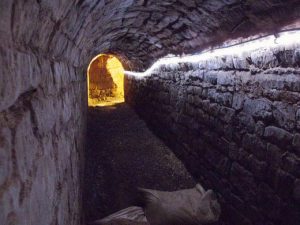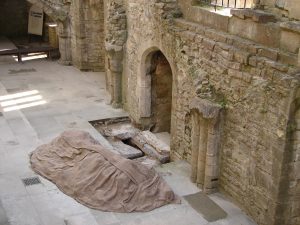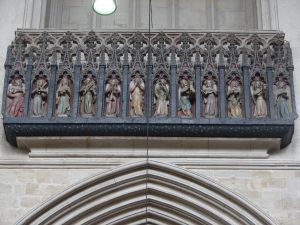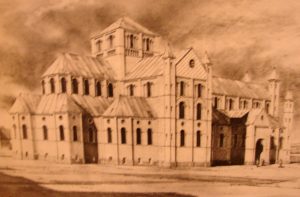 King Richard’s Sword is the latest novel in my Lady Apollonia West Country Mysteries. It is set in Worcester, England, in the years, 1399-1400, and Worcester Priory and Cathedral plays an important role in the story. An early Bishop of Worcester had been canonised a saint of the church, and his name, Saint Wulfstan, was revered within the cathedral community. He was known for his founding of Saint Wulfstan’s Hospital which also has a minor role in my story.
King Richard’s Sword is the latest novel in my Lady Apollonia West Country Mysteries. It is set in Worcester, England, in the years, 1399-1400, and Worcester Priory and Cathedral plays an important role in the story. An early Bishop of Worcester had been canonised a saint of the church, and his name, Saint Wulfstan, was revered within the cathedral community. He was known for his founding of Saint Wulfstan’s Hospital which also has a minor role in my story.
Saint Wulstan’s career as Bishop of Worcester was unusual because he was a Saxon who became bishop in 1062 before the Norman Conquest in 1066. After the conquest, Norman bishops replaced Saxons in most dioceses. By 1065, Wulfstan was the only Saxon bishop remaining and he served another twenty years until his death in 1095. Wulfstan began the construction of a new Norman cathedral in 1084. His Norman cathedral, shown above to the right, was almost as large as the present building and was essentially completed by five years after his death. Elements of it can be found in the Gothic rebuilding of Lady Apollonia’s period and today as well.
Wulfstan is generally credited with founding the hospital in Worcester which bore his name and was located just outside the Sidbury Gate on the southeast corner of the medieval city around 1085. The hospital staff followed the Rule of Saint Augustine and served the indigent and needy. It had its ups and downs but survived until the dissolution of the monasteries by King Henry VIII in the 16th century. After that, the facility was put to various uses and eventually became known as the Commandery, reflecting that some of the early masters of the hospital may have been Knights Templar or Knights Hospitaler. Since 1977 the building has been used as a museum.
To learn more about Saint Wulfstan click on
https://en.wikipedia.org/wiki/Wulfstan_(died_1095)
or
http://geoffboxell.tripod.com/wulfstan.htm
To learn more about his hospital click on
http://www.british-history.ac.uk/vch/worcs/vol2/pp175-179#h3-0002
To learn more about the Commandery and its medieval use as Wulftan’s hospital click on
https://en.wikipedia.org/wiki/The_Commandery
